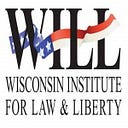School Closures Saved Schools Money. But Where Did it Go?
By: Will Flanders and Jessica Holmberg
On Dec. 30, amidst the holiday hubbub, the Department of Public Instruction (DPI) released the results of a statewide survey of school districts regarding their experiences during the COVID-19 pandemic. The survey, mandated by the legislature last April, is a window into how all 421 districts in the state responded to the pandemic, including decisions to shut down and the biggest challengers they faced.
Perhaps the most intriguing aspect of the survey is the portion which deals with additional costs and savings to school districts during the pandemic. In light of efforts by DPI to increase funding by an additional $1.6 billion for the 2021–23 budget, it is particularly important to see what sort of stewards of taxpayer money districts have been this year.
The report asks for cost and savings in five categories: utilities, transportation, food service, personnel, contract terminations, and a catch-all “other” bucket. The Figure below reports the net savings and costs across the state in each of the main buckets. By far the biggest savings came from transportation costs. When schools are shut down, obviously most kids are no longer being transported leading to a savings statewide of more than $34 million.
Other substantial savings came from Personnel costs. The $10.6 million in savings here one presumes may come partially from a lack of a need for substitutes, who are generally paid on an “as needed” basis. The only main bucket for which we see a cost increase is for food services, which increased by approximately $6.3 million. This likely results from the logistical challenges of continuing to provide free and reduced meals during the pandemic. These buckets result in a net savings of $40 million.
Despite the aggregate savings statewide, costs and savings varied substantially by district. The table below shows the top five saving and spending districts. Districts with the largest savings appear to have gotten the bulk of it through reduced transportation costs. As a district that shut down, for instance, Milwaukee saved more than $5 million in this category. At the other end of the spectrum are districts that spent more on food services. Racine lists an increase there of $1.9 million. Curiously, some of the largest spending districts, including Racine, report no savings on their transportation budgets despite being shut down. Given that other districts were able to get out of at least a portion of their transportation spending, this suggests either that bad contracts were made by the district, or that they are not fully reporting the money they saved.
The “Other” category is essentially unusable in its current form. There is no consistent format to the reporting of data in this column, making it very difficult to interpret. Some of the choices seem totally reasonable — such as the purchase of personal protective equipment and additional cleaning time. Others were far more questionable. For instance, Slinger includes the use of savings from not paying coaches to build new soccer bleachers as an additional COVID expense. North Cape includes snow removal, which is hard to relate to COVID in my mind (perhaps reduced global warming from less driving?). Our best interpretations of this data suggest about $2–5 million in additional costs to districts, still dwarfed by the $40 million in savings across the other categories.
But this data provides a window into other components of school district budgeting that are difficult to see with regularly available data. For instance, many districts report saving thousands of dollars in employee travel. Cedarburg reports a savings of more than $55,000 as a result of travel restrictions. Oconomowoc reports more than $34,000 in such expenses. Such costs represent the full per pupil funding for multiple students in these districts. In the era of Zoom, we ought to question whether these trips are useful expenditures of taxpayer money in the future.
Many districts throughout the state have continued to keep their doors shut, despite substantial scientific evidence that it is safe to reopen. The data here shows clearly that districts enjoy significant financial savings from keeping their doors shut. This represents the hard-earned money of Wisconsin taxpayers, and ought to be used to educate Wisconsin’s children. These savings ought to be passed on to Wisconsin parents who are struggling to educate their children in districts more concerned about the interests of the teachers union than about educating kids. Additionally, the data here gives us a more surgical look at school district spending than is currently available in most circumstances. Taxpayers deserve ready access to this information. Early last year, WILL supported legislation to increase funding transparency, and we would urge policymakers to give it further consideration.
Flanders is research director and Holmberg is a research and communications associate at the Wisconsin Institute for Law & Liberty.
